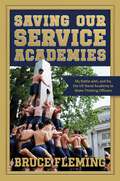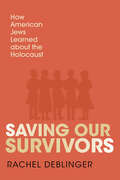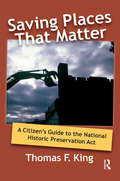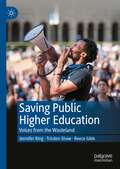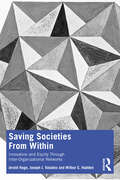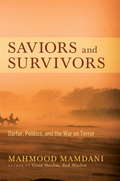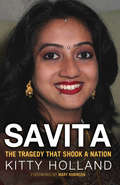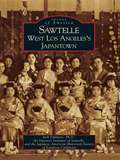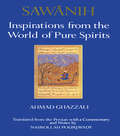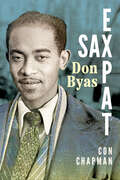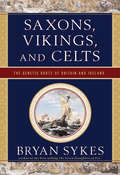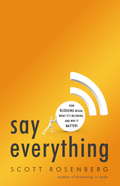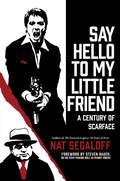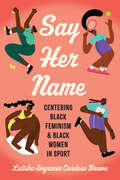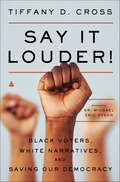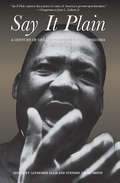- Table View
- List View
Saving One's Own: Jewish Rescuers during the Holocaust
by Mordecai PaldielIn this remarkable, historically significant book, Mordecai Paldiel recounts in vivid detail the many ways in which, at great risk to their own lives, Jews rescued other Jews during the Holocaust. In so doing he puts to rest the widely held belief that all Jews in Nazi-dominated Europe wore blinders and allowed themselves to be led like “lambs to the slaughter.” Paldiel documents how brave Jewish men and women saved thousands of their fellow Jews through efforts unprecedented in Jewish history. Encyclopedic in scope and organized by country, Saving One’s Own tells the stories of hundreds of Jewish activists who created rescue networks, escape routes, safe havens, and partisan fighting groups to save beleaguered Jewish men, women, and children from the Nazis. The rescuers’ dramatic stories are often shared in their own words, and Paldiel provides extensive historical background and documentation. The untold story of these Jewish heroes, who displayed inventiveness and courage in outwitting the enemy—and in saving literally thousands of Jews—is finally revealed.
Saving Our Service Academies: My Battle with, and for, the US Naval Academy to Make Thinking Officers
by Bruce FlemingOnce proud citadels of virtue, the US military academies have lost their way and are running on fumes. They need to be fixed before it&’s too late.Saving Our Service Academies covers one man&’s unrelenting thirty-year fight with the military bureaucracy to instill qualities of force and thoughtfulness in officers-to-be, to show young men how to be adults with other men and women, and to show young women how to deal with the men. Bruce Fleming has spent over thirty years teaching midshipmen and future officers at the US Naval Academy in Annapolis. This position was both a dream job and a nightmare for the enthusiastic, athletic, young Fleming. He found, in the thousands of midshipmen he taught, mentored, and exercised with for three decades, a heartbreaking waste of potential, as promising officers-to-be lapsed into apathy and cynicism because of the dispiriting reality behind the gleaming facade of the Naval Academy. What happened to duty, honor, and country at Annapolis? These values have disappeared in the wake of changes in the world, such as the rise of ROTC and the increase in expense of civilian colleges (the service academies are free to the students), and in the attempt to use the service academies as experiments in trendy social engineering. A staunch advocate for military strength, Fleming shows how the smoke and mirrors of service academies produce officers who are taught to say &“SIR, YES SIR&” rather than to have the guts to say things their commanding officer doesn&’t want to hear. Is that why the US hasn&’t won a war since World War II? By writing op-eds about the waste, fraud, and abuse of government (and taxpayer) money, Fleming put a target on his back that the USNA administration used to fire him in 2018, despite being a tenured civilian professor. He was reinstated by a federal judge in 2019. The service academies are government programs that no longer fill the needs for which they were created, and so like all government programs, can be re-examined. Indeed, as Fleming argues, they teach blind obedience in officers rather than informed and respectful questioning, and so sap our military strength rather than increasing it. They need to be re-imagined not as stand-alone undergraduate institutions that wall off future officers in an increasingly untenable isolation from the country they are to defend, but either be combined with the officer commissioning sources that currently produce over 80 percent of our new officers, or re-purposed to post-civilian college training institutions.
Saving Our Sons: Raising Black Children in a Turbulent World
by Marita GoldenRaising Black Teen Boys in Turbulent Times "It is always heartening to see women step up to the writer's table. When the results are as adroit and affecting as Marita Golden's work, it is more than satisfying; it is a cause for celebration." —Toni Morrison, Nobel LaureateTwo decades ago, Marita was the first Black writer to address the horrifying statistic that haunts all Black mothers: the leading cause of death among Black males under twenty-one is homicide. Today, police brutality rages on as millions call for the reformation of our broken law enforcement in the wake of the traumatic murders of Black teen boys like Trayvon Martin, Michael Brown and Daunte Wright. Read an intimate account of a mother’s efforts to save her son. Writing her son’s story against the backdrop of a society plagued by systemic racism, economic inequality, and mass incarceration, Golden offers a form of witness and testimony in a time of crisis for Black Americans. Learn how to grapple with the realities of Black America. Join Golden as she confronts the root causes of violence inflicted upon Black teen boys and reassesses the legacy of her own generation's struggle for civil rights. Explore Black boys’ difficult road to adulthood in the U.S. and learn why single Black mothers are often wrongly blamed for their sons’ actions.Gain invaluable advice and knowledge from trustworthy sources. In Saving Our Sons, Golden documents her conversations with psychologists, writers, and young Black males themselves.This book is designed to help you: Discuss and unpack generational trauma with loved onesGain deeper insight into the injustices Black children face in the U.S.Recognize the importance of community for the success of Black teen boys If you liked Decoding Boys, Mother & Son: Our Back & Forth Journal, The Boy Crisis or Boy Mom, you’ll love Saving Our Sons.
Saving Our Survivors: How American Jews Learned about the Holocaust (The Modern Jewish Experience)
by Rachel DeblingerHow did American Jews come to learn about the Holocaust in the immediate aftermath of the war? What kinds of images and representations of Holocaust survivors first circulated in America, when most Jewish survivors were still stuck in European displaced persons camps? Drawing on communal records and previously unexamined cultural materials, Saving Our Survivors details the kinds of narratives that inspired American Jewish action in the wake of the Holocaust and argues that American Jewish communal life became a significant site of knowledge formation and dissemination about the Holocaust. Through organizational campaign materials, public speeches, appeal letters, brochures, posters, radio broadcasts, and short films, American Jews were compelled to act as heroes, saving Jewish lives and a Jewish future. Bringing postwar communal narratives into the longer history of Holocaust memory in America challenges our understanding of what Holocaust narratives look and sound like and invites us to consider the relationship between humanitarian aid and the narratives they employ to inspire action. By expanding our understanding of how stories about the Holocaust became part of an American discourse and considering multiple forms of Holocaust survivor accounts, Saving Our Survivors highlights the messy, diffuse, and contested nature of memory construction in the immediate aftermath of the Holocaust, as well as each new tragedy we confront.
Saving Places that Matter: A Citizen's Guide to the National Historic Preservation Act
by Thomas F KingThey’re going to tear down the most cherished building in your town for another strip mall. How do you stop it? Tom King, renowned expert on the heritage preservation process, explains to preservationists and other community activists the ins and outs of Section 106 of the National Historic Preservation Act—the major federal law designed to protect historic places—and how it can be used to protect special places in your community. King will show you the scope of the law, how it is often misinterpreted or ignored by government agencies and developers, and how to use its provisions to force other to pay attention to your concerns. He explains the quirky role of the National Register and the importance of consultation in getting what you want. King provides you with numerous examples of how communities have used the Section 106 process to stop wanton development, and encourages you to do the same. King’s guide will be the bible for any heritage preservation or community activist movement.
Saving Public Higher Education: Voices from the Wasteland
by Jennifer Ring Trisden Shaw Reece GibbIn this book, eleven recent college graduates describe in vivid detail their journeys from racially segregated, underfunded public schools to a state university, and the obstacles they encountered along the way. Chapters highlight personal accounts of poverty, violence, and bullying in childhood, the persistence of racism on the university campus and the inability of faculty and administrators to combat it. Overcoming all-too-common barriers, these eleven students persevered, earned their degrees and continued on to graduate school and professional careers. The authors conclude the book with policy proposals that not only address the issues raised by the students, but that would also restore public education to its original role as an engine of opportunity and driver of democracy.
Saving Remnants: Feeling Jewish in America
by Sara Bershtel Allen GraubardInterviews with American Jews of the postwar generation offer an overview of what ethnicity and faith have come to mean, and explore the conflict between traditional group loyalties and secular society
Saving Societies From Within: Innovation and Equity Through Inter-Organizational Networks
by Jerald Hage Joseph J. Valadez Wilbur C. HaddenMoving beyond existing models from economics and political science, this book shows how crises in capitalism and democracy can be solved with Systemic coordinated inter-organizational networks.It offers a new model of societal coordination that builds cooperation and trust while solving today’s modern and complex practical problems: Systemic coordinated inter-organizational networks (SCIONs). It details how SCIONs can quickly catalyze organizational change among interorganizational network members while providing a general framework for characterizing individual and organizational change. The chapters apply these theoretical ideas in an epic case study of the rebuilding of the health care system in rural Nicaragua after a major natural disaster (Hurricane Mitch). They provide lessons for public health program managers while contributing to the literatures on modes of coordination and on social capital.The book is a vital text for upper-division courses on management, inter-organizational collaboration, crisis management and public health.
Saving Time: Discovering a Life Beyond the Clock
by Jenny OdellWe are living on the wrong clock, and it is destroying us. The New York Times bestselling author of How to Do Nothing offers us different ways to experience time in this dazzling, subversive, and deeply hopeful book. <p><p>In her first book, How to Do Nothing, Jenny Odell wrote about the importance of disconnecting from the “attention economy” to spend time in quiet contemplation. But what if you don’t have time to spend? <p><p>In order to answer this seemingly simple question, Odell took a deep dive into the fundamental structure of our society and found that the clock we live by was built for profit, not people. This is why our lives, even in leisure, have come to seem like a series of moments to be bought, sold, and processed ever more efficiently. Odell shows us how our painful relationship to time is inextricably connected not only to persisting social inequities but to the climate crisis, existential dread, and a lethal fatalism. <p><p>This dazzling, subversive, and deeply hopeful book offers us different ways to experience time—inspired by pre-industrial cultures, ecological cues, and geological timescales—that can bring within reach a more humane, responsive way of living. As planet-bound animals, we live inside shortening and lengthening days alongside gardens growing, birds migrating, and cliffs eroding; the stretchy quality of waiting and desire; the way the present may suddenly feel marbled with childhood memory; the slow but sure procession of a pregnancy; the time it takes to heal from injuries. Odell urges us to become stewards of these different rhythms of life in which time is not reducible to standardized units and instead forms the very medium of possibility. <p><p>Saving Time tugs at the seams of reality as we know it—the way we experience time itself—and rearranges it, imagining a world not centered on work, the office clock, or the profit motive. If we can “save” time by imagining a life, identity, and source of meaning outside these things, time might also save us. <p> <b>New York Times Bestseller</b>
Saving the School
by Michael BrickIn the race to save a failing public high school, one principal finds that making the numbers is only the beginning Being principal of Reagan High in Austin, Texas, was no dream assignment. Test scores were low, dropout rates were high, and poverty was endemic. But when Anabel Garza took the job, she started something no one expected. Racing against a deadline just to make the numbers, she set out to rebuild the kind of school that once unified neighborhoods across America. By her side, a basketball coach showed kids they could be winners, a young science teacher showed them they could learn, and a community rallied around a treasured institution. In this powerful rejoinder to the prevailing winds of education policy, Michael Brick takes readers inside the high-pressure world of a school on the brink. Paying overdue tribute to a vital American tradition—the great American high school—Saving the School exposes the flaws of a broken system but also tells an inspiring story of faith, hope, and perseverance. .
Saving the Security State: Exceptional Citizens in Twenty-First-Century America
by Inderpal GrewalIn Saving the Security State Inderpal Grewal traces the changing relations between the US state and its citizens in an era she calls advanced neoliberalism. Marked by the decline of US geopolitical power, endless war, and increasing surveillance, advanced neoliberalism militarizes everyday life while producing the “exceptional citizens”—primarily white Christian men who reinforce the security state as they claim responsibility for protecting the country from racialized others. Under advanced neoliberalism, Grewal shows, others in the United States strive to become exceptional by participating in humanitarian projects that compensate for the security state's inability to provide for the welfare of its citizens. In her analyses of microfinance programs in the global South, security moms, the murders at a Sikh temple in Wisconsin, and the post-9/11 crackdown on Muslim charities, Grewal exposes the fissures and contradictions at the heart of the US neoliberal empire and the centrality of race, gender, and religion to the securitized state.
Saviors and Survivors: Darfur, Politics, and the War on Terror
by Mahmood MamdaniThose who insist on seeing the horrific violence in Darfur as a conflict between "Arabs" and "Africans" and as a genocide are failing to look at the historical and political context of the violence and are serving to delay political reconciliation with their calls for military intervention and their emphasis on retributive justice. So argues Mamdani (anthropology and politics, Columbia U. ), who urges us to rethink key assumptions about traditions, race, tribe, and locality in Darfur in order to better understand the conflict and how to move towards political reconciliation and peace. He sets his discussion of these issues within the context of colonial and nationalist historiographies of Sudan and Darfur, seeking to debunk the simplistic understanding of the violence as a conflict between Arab settler rulers and African natives. He argues instead that the violence should be seen as product of a land tenure system that set different tribes interests' against one another, sometimes along an Arab/non-Arab axis and sometimes along an Arab/Arab axis. Annotation ©2010 Book News, Inc. , Portland, OR (booknews. com)
Savita: The Tragedy that shook a nation
by Kitty HollandSeventeen weeks pregnant and facing a miscarriage, Savita Halappanavar and her husband Praveen walked into an Irish maternity ward in October 2012. Unwittingly, the couple also walked into that deeply controversial arena in which Ireland’s legislative position on abortion remained unresolved.A week later, Savita was dead from septicaemia. Reports of her death and of the refusal to allow Savita a termination of her pregnancy sent shockwaves across Ireland and around the world. Once again the subject of abortion was catapulted to the very top of the agenda in Ireland. With the pro-life and pro-choice camps claiming the moral high ground, both sides in the bitterly contested battle sought to appropriate Savita’s story and her image. In the midst of the ensuing rage and furore, the marches and protests, the threats and counter-threats that exploded across political and media platforms, Savita and the complete circumstances of her death were lost. In Savita: The Tragedy That Shook A Nation, Kitty Holland addresses this imbalance as she reveals the truth behind the headlines and explores many unanswered questions: Who was Savita? How significant was it that she was a non-Irish, non-Catholic woman in search of help on Irish soil? And how did her husband and her community’s reaction to her death shape the parameters of the debate which followed? Holland’s exposé also looks at how the tragic circumstances of Savita’s death played a part in compelling the Irish Government to finally legislate on abortion and how activists on each side succeeded or failed in shaping that legislation.
Savor: A Chef's Hunger for More
by Fatima AliA young chef whose dreams were cut short savors every last minute as she explores food and adventure, illness and mortality in Savor, an &“inspiring&” (The New York Times Book Review) memoir and family story that sweeps from Pakistan to Manhattan and beyond. &“Ali&’s strength and passion for food and her culture shines through. . . . This memoir is a tribute to the extraordinary life and impact she made in twenty-nine years.&”—Oprah Daily (20 of the Best Fall Nonfiction Books of 2022)Fatima Ali won the hearts of viewers as the Fan Favorite of Bravo&’s Top Chef in season fifteen. Twenty-nine years old, she was a dynamic, boundary-breaking chef and a bright new voice for change in the food world. After the taping wrapped and before the show aired, Fati was diagnosed with a rare form of bone cancer. Not one to ever slow down or admit defeat, the star chef vowed to spend her final year traveling the world, eating delicious food, and making memories with her loved ones. But when her condition abruptly worsened, her plans were sidelined. She pivoted, determined to make her final days count as she worked to tell the story of a brown girl chef who set out to make a name for herself, her food, and her culture. Including writing from Fatima during her last months and contributions by her mother, Farezeh, and her collaborator, Tarajia Morrell, Savor is a deftly woven account and an inspiring ode to the food, family, and countries Fatima loved so much. Alternating between past and present, readers are transported back to Pakistan and the childhoods of both Fatima and Farezeh, each deeply affected by cultural barriers that shaped the course of their lives. From the rustic stalls of the outdoor markets of Karachi to the kitchen and dining room of Meadowood, the acclaimed three-star Michelin restaurant where she apprenticed, Fati reflects on her life and her identity as a chef, a daughter, and a queer woman butting up against traditional views. Savor is a triumphant memoir, at once an exploration of the sense of wonder that made Fatima so special and a shining testament to the resilience of the human spirit. At its core, it is a story about what it means to truly live, a profound and exquisite portrait of savoring every moment.
Savoring Alternative Food: School gardens, healthy eating and visceral difference (Routledge Studies in Food, Society and the Environment)
by Jessica Hayes-ConroyAdvocates of the alternative food movement often insist that food is our "common ground" – that through the very basic human need to eat, we all become entwined in a network of mutual solidarity. In this challenging book, the author explores the contradictions and shortcomings of alternative food activism by examining specific endeavours of the movement through various lenses of social difference – including class, race, gender, and age. While the solidarity adage has inspired many, it is shown that this has also had the unfortunate effect of promoting sameness over difference, eschewing inequities in an effort to focus on being "together at the table". The author explores questions of who belongs at the table of alternative food, and who gets to decide what is eaten there; and what is at stake when alternative food practices become the model for what is right to eat? Case studies are presented based on fieldwork in two distinct loci of alternative food organizing: school gardens and slow food movements in Berkeley, California and rural Nova Scotia. The stories take social difference as a starting point, but they also focus specifically on the complexities of sensory experience – how material bodies take up social difference, both confirming and disrupting it, in the visceral processes of eating. Overall the book demonstrates the importance of moving beyond a promotion of universal "shoulds" of eating, and towards a practice of food activism that is more sensitive to issues of social and material difference.
Sawtelle: West Los Angeles's Japantown (Images of America)
by Japanese American Historical Society of Southern California Jack Fujimoto Japanese Institute of SawtelleA 1.48-square-mile piece of unincorporated Los Angeles County when it was annexed by the City of Los Angeles in 1922, tiny Sawtelle has lived very large in the hearts and minds of Japanese Americans. Their homes, livelihoods, religions, businesses, language, and other ethnocentric and social involvements are rooted in the area, with the Japanese Institute of Sawtelle as the cultural nexus. Bisected by Sawtelle Boulevard, this particular Japantown flourished through a close-knit network of immigrants who were denied citizenship until 1952 and were excluded by law from land ownership. Only through second-generation, American-born children could they buy real property. These vintage images--collected from local families, businesses, and organizations--provide rare glimpses into the Japanese immigrant experience in Los Angeles.
Sawānih: Inspirations from the World of Pure Spirits
by Ahmed GhazzaliFirst published in 1986. The present volume is a complete translation of the Sawanih, written by the Persian Sufi master Ahmad Ghazzali with a commentary by the translator. The title of this book, to Sufis, means the inspirations that a mystic experiences on his journey through the world of the Spirit (c?lam-i r?h) or, as it is sometimes called, the world of Pure Spirits (c?lam-i arwah).
Sax Expat: Don Byas (American Made Music Series)
by Con ChapmanDon Byas (1913–1972) may be lesser known than the counterparts he played with—Count Basie, Duke Ellington, and Dizzy Gillespie, among others—but he was an enigma. He never stayed with a band for long, and eventually went solo partly to make more money and partly due to his inability to work with bandleaders. Often drinking to excess, alcohol fueled his sometimes-erratic behavior on and off the bandstand. He went through at least thirteen different groups in fifteen years of professional play before leaving for Europe in 1946. Despite his fractious personality, in Europe he found peace and contentment as a family man in the Netherlands, where he lived out his days with his second wife and their four children. He learned at least seven languages during his years in Europe, and on traveling to a new country could pick up a few phrases in short order, soon speaking to the locals and even composing songs in their native tongue. In Sax Expat: Don Byas, author Con Chapman argues that Byas’s relative obscurity arises from his choice to live in Europe, where he missed out on recording opportunities and exposure in the US that would have made him renowned and wealthier. His numerous achievements, including his solo on Count Basie’s “Harvard Blues,” which is a model of restrained invention; his interpretation of the sentimental movie theme “Laura”; and his duets with bassist Slam Stewart were included in the Smithsonian Collection of Classic Jazz and secured Byas’s place in jazz history. This biography brings to life an amazing jazz story.
Saxons, Vikings, and Celts: The Genetic Roots of Britain and Ireland
by Bryan SykesFrom the best-selling author of The Seven Daughters of Eve, a perfect book for anyone interested in the genetic history of Britain, Ireland, and America. One of the world's leading geneticists, Bryan Sykes has helped thousands find their ancestry in the British Isles. Saxons, Vikings, and Celts, which resulted from a systematic ten-year DNA survey of more than 10,000 volunteers, traces the true genetic makeup of the British Isles and its descendants, taking readers from the Pontnewydd cave in North Wales to the resting place of the Red Lady of Paviland and the tomb of King Arthur. This illuminating guide provides a much-needed introduction to the genetic history of the people of the British Isles and their descendants throughout the world.
Say Everything: How Blogging Began, What It's Becoming, and Why It Matters
by Scott RosenbergBlogs are everywhere. They have exposed truths and spread rumors. Made and lost fortunes. Brought couples together and torn them apart. Toppled cabinet members and sparked grassroots movements. Immediate, intimate, and influential, they have put the power of personal publishing into everyone’s hands. Regularly dismissed as trivial and ephemeral, they have proved that they are here to stay.In Say Everything, Scott Rosenberg chronicles blogging’s unplanned rise and improbable triumph, tracing its impact on politics, business, the media, and our personal lives. He offers close-ups of innovators such as Blogger founder Evan Williams, investigative journalist Josh Marshall, exhibitionist diarist Justin Hall, software visionary Dave Winer, "mommyblogger" Heather Armstrong, and many others. These blogging pioneers were the first to face new dilemmas that have become common in the era of Google and Facebook, and their stories offer vital insights and warnings as we navigate the future. How much of our lives should we reveal on the Web? Is anonymity a boon or a curse? Which voices can we trust? What does authenticity look like on a stage where millions are fighting for attention, yet most only write for a handful? And what happens to our culture now that everyone can say everything?Before blogs, it was easy to believe that the Web would grow up to be a clickable TV–slick, passive, mass-market. Instead, blogging brought the Web’s native character into focus–convivial, expressive, democratic. Far from being pajama-clad loners, bloggers have become the curators of our collective experience, testing out their ideas in front of a crowd and linking people in ways that broadcasts can’t match. Blogs have created a new kind of public sphere–one in which we can think out loud together. And now that we have begun, Rosenberg writes, it is impossible to imagine us stopping.In his first book, Dreaming in Code, Scott Rosenberg brilliantly explored the art of creating software ("the first true successor to The Soul of a New Machine," wrote James Fallows in The Atlantic). In Say Everything, Rosenberg brings the same perceptive eye to the blogosphere, capturing as no one else has the birth of a new medium.
Say Hello to My Little Friend: A Century of Scarface
by Nat SegaloffThe author of The Exorcist Legacy: 50 Years of Fear, brings us another sensational Hollywood tell-all celebrating the 40th anniversary of Brian De Palma&’s legendary 1983 gangster film, while also showcasing its broader appeal across the past century by confronting the equally controversial legacy of its 1932 predecessor. When Brian DePalma&’s operatically violent Scarface debuted in 1983, the film drew almost as much fire as the relentless gunfire in the film itself. Starring Al Pacino as Cuban refugee-turned-crime-boss Tony Montana, Steven Bauer as his best friend Manny, and Michelle Pfeiffer as an Eighties gangster&’s moll, the movie revamped the original 1932 film for a new era of drugs, sex, and graphic violence. Attacked as both a celebration of cocaine-fueled excess and a condemnation of it, the film&’s reputation continued to rise over the years. But the real story of its success started nearly a century ago—when Hollywood first fell in love with the American gangster . . . Hollywood&’s infatuation with money, power, and organized crime has captured the public&’s imagination and made Scarface one of its most enduring modern myths. From a 1912 gangster film by D.W. Griffith to the 1932 hit Scarface starring Paul Muni, to Brian DePalma&’s 1983 shocker, the antihero&’s rise and fall exposes the dark side of the American Dream—whether it&’s Prohibition Era bootleggers or modern-day drug dealers. When actor Al Pacino got the idea of doing a remake of Scarface after screening the original, a legend was (re)born—and the rest is history. Filled with behind-the-scenes anecdotes, untold tales from Old and New Hollywood, and sixteen pages of eye-popping photos, Say Hello to My Little Friend is the ultimate guide to everything Scarface. With guns blazing and chainsaws whirring, movie biz writer Nat Segaloff tears into this pop culture phenomenon with fascinating insights, stunning revelations, and a true fan&’s glee. This is a must-have book for movie buffs, crime lovers, and culture vultures everywhere.
Say Her Name: Centering Black Feminism and Black Women in Sport (Critical Issues in Sport and Society)
by Letisha Engracia BrownSay Her Name: Centering Black Feminism and Black Women in Sports offers an in-depth look into the lived experiences of Blackgirlwomen as athletes, activists, and everyday people through a Black feminist lens. With so much research on race centered on Black men and gender research focusing on white women, Say Her Name offers a necessary conversation that places Blackgirlwomen at the center of discussion. Say Her Name delves deeply into issues of gender, the politics of punishment, athlete activism, the politics of Black hair, fingernails and fashion, and the representation and commodification of Blackgirlwomen in sport and society. An entry point into the growing research in sport studies and beyond from a Black feminist lens, Say Her Name offers a clear window into the power and potential of nuanced examinations of sport. As a reflection of the larger social world, sport provides a framework for understanding larger social issues, including racism, sexism, and misogynoir. Blackgirlwomen have varied experiences in sport, and Say Her Name provides a window into those experiences. The book discusses Black women in sports including the South African runner Caster Semenya and the American runners Florence Griffith Joyner and Sha’Carri Richardson, as well as Venus and Serena Williams, Gabby Douglas, and Simone Biles. The women in this book have lived experiences that speak to the larger experiences of Black women and girls in sport and society, while also leaning into a larger discussion of the importance of the social movement #SayHerName.
Say It Loud!: African American Audiences, Media and Identity
by Robin R. Means ColemanIn a collection of essays based on direct interview research, Say it Loud! amplifies the voice of ordinary African-Americans as they respond to media presentations of Black society. Each chapter investigates ways in which African-American identity is constructed, maintained, and represented in mass media and how these portrayals are interpreted within the African-American community. Together the essays cover a vast array of media messages in television, film, music, print and cyberspace. From the Boondocks comic strip, The Cosby Show, and The Color Purple to the music of rap artist DMX and original testimony from a Menace II Society copycat killer, the material included in this volume is examined as context for the African-American struggle to achieve definition, meaning, and power. Say it Loud! offers rare insight into how this struggle is both helped and hindered by the representation of race in our media culture.
Say It Louder!: Black Voters, White Narratives, and Saving Our Democracy
by Tiffany CrossA breakout media and political analyst delivers a sweeping snapshot of American Democracy and the role that African Americans have played in its shaping while offering concrete information to help harness the electoral power of the country’s rising majority and exposing political forces aligned to subvert and suppress Black voters.Black voters were critical to the Democrats’ 2018 blue wave. In fact, 90 percent of Black voters supported Democratic House candidates, compared to just 53 percent of all voters. Despite media narratives, this was not a fluke. Throughout U.S. history, Black people have played a crucial role in the shaping of the American experiment. Yet still, this powerful voting bloc is often dismissed as some “amorphous” deviation, argues Tiffany Cross.Say It Louder! is her explosive examination of how America’s composition was designed to exclude Black voters, but paradoxically would likely cease to exist without them. With multiple tentacles stretching into the cable news echo chamber, campaign leadership, and Black voter data, Cross creates a wrinkle in time with a reflective look at the timeless efforts endlessly attempting to deny people of color the right to vote—a basic tenet of American democracy. And yet as the demographics of the country are changing, so too is the electoral power construct—by evolution and by force, Cross declares. Grounded in the most-up-to-date research, Say It Louder! is a vital tool for a wide swath of constituencies.
Say It Plain: A Century of Great African American Speeches
by Booker T. Washington Jesse Jackson Clarence Thomas John Hope Franklin Julian Bond Martin Luther King Jr. Lani Guinier Howard Thurman Randall Robinson Stokely Carmichael Fannie Lou Hamer Joseph Lowery Dick Gregory Marcus Garvey Walter White Barbara Jordan Shirley Chisholm Thurgood Marshall Mary McLeod Bethune Charles Hamilton Houston Benjamin L. Hooks Louis Farrakhan Johnetta B. ColeA moving portrait of how black Americans have spoken out against injustice—with speeches by Thurgood Marshall, Shirley Chisholm, Jesse Jackson, and more. In &“full-throated public oratory, the kind that can stir the soul&”, this unique anthology collects the transcribed speeches of the twentieth century&’s leading African American cultural, literary, and political figures, many never before available in printed form (Minneapolis Star-Tribune). From an 1895 speech by Booker T. Washington to Julian Bond&’s sharp assessment of school segregation on the fiftieth anniversary of Brown v. Board in 2004, the collection captures a powerful tradition of oratory—by political activists, civil rights organizers, celebrities, and religious leaders—going back more than a century. Including the text of each speech with an introduction placing it in historical context, Say It Plain is a remarkable record—from the back-to-Africa movement to the civil rights era and the rise of black nationalism and beyond—conveying a struggle for freedom and a challenge to America to live up to its democratic principles. Includes speeches by: Mary McLeod BethuneJulian BondStokely CarmichaelShirley ChisholmLouis FarrakhanMarcus GarveyJesse JacksonMartin Luther King Jr.Thurgood MarshallBooker T. WashingtonWalter White

